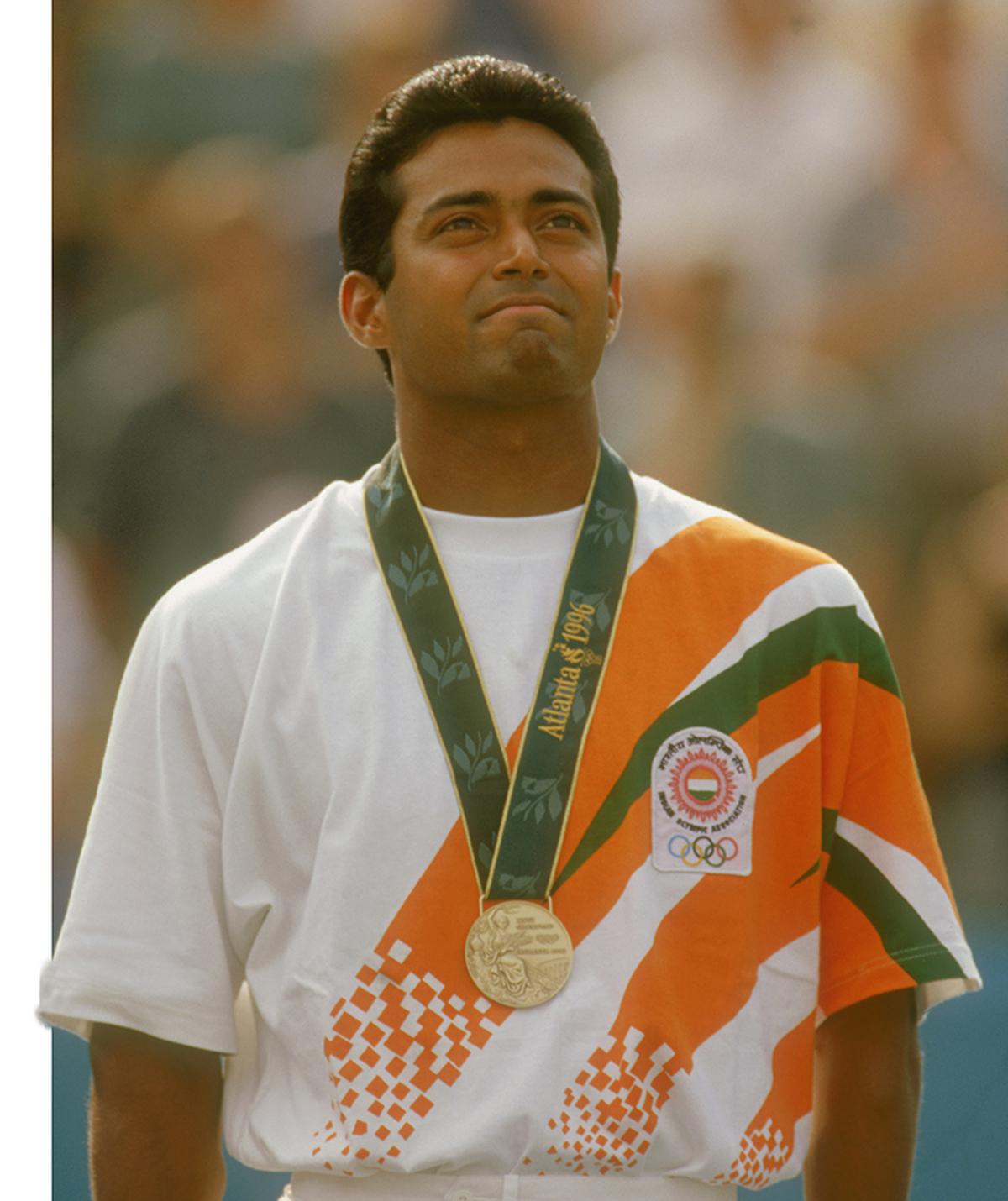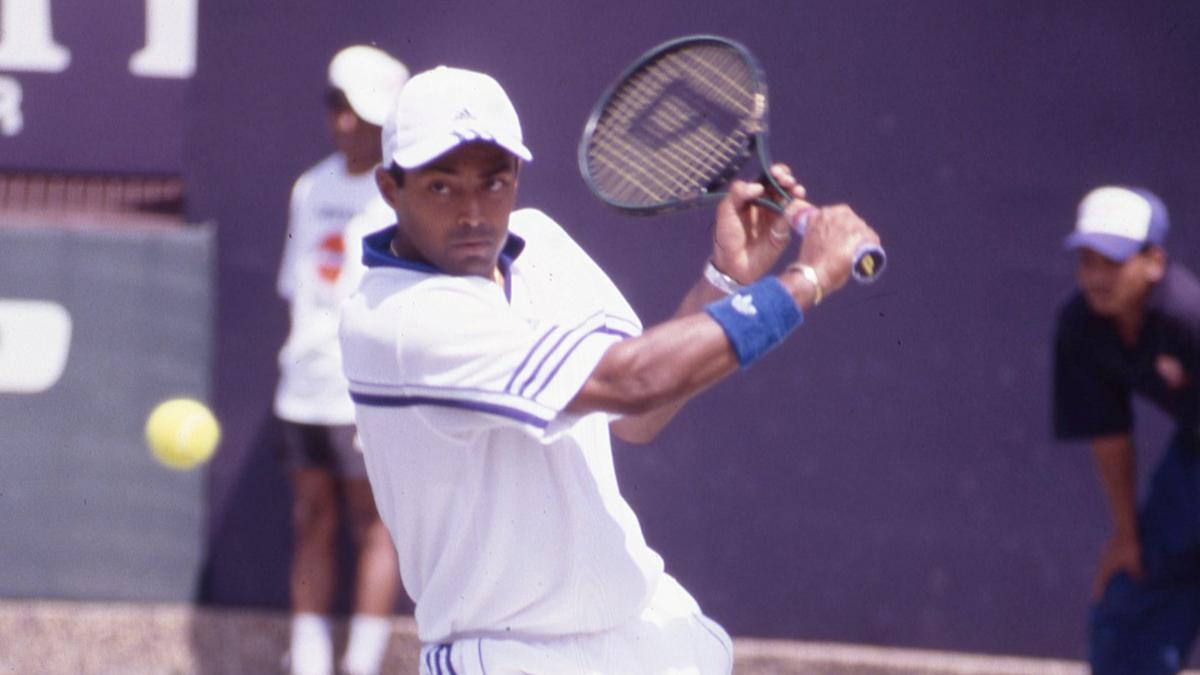For more than two-and-a-half decades of his playing career, Leander Paes resembled a quintessential showman. He basked in the spotlight, brought emotion and theatre to the court as he sprinted between lines, dived full length to put racquet to ball, chest-bumped his partners and high-fived fans.
However, unlike many a showman, Leander didn’t have an asterisk next to his name. His tale was not one of “wasted potential”, a rather pejorative term used to describe the likes of Nick Kyrgios, who is a Major doubles champion and a Wimbledon singles finalist no less. Within Leander’s pint-sized frame of 5’10” – small by modern-day tennis standards – rested a genius tennis player, winner of 18 Grand Slam titles (eight in doubles, 10 in mixed doubles), 54 career doubles crowns, a record 45 Davis Cup doubles ties and an individual singles Olympic medal.
The Indian tennis legend turned 50 on Saturday (June 17), and until March 2020 when COVID-19 hit, he had his eyes set on an eighth Olympic appearance, in Tokyo, and had also branded the months leading into the showpiece event as “One Last Roar”, with custom-made T-shirts and a video-camera in tow. In late 2021, he even made an entry into the political arena in Goa, but not much came of it. But he remains in the limelight, having never retired officially and keeping his political cards close to his chest. Like most showmen, he writes his own rules.
Leander’s stock was largely built through his exploits in the mid to late 1990s, which continued well into the second decade of the millennium. It was a time when a newly liberalised India was having its first brush with the cut-throat professionalisation of sport and it was up to Leander, along with Sachin Tendulkar and Viswanathan Anand, to show that Indian sport could stand shoulder to shoulder with the rest of the world.
The bronze medal at the 1996 Atlanta Olympics, where he beat Brazil’s Fernando Meligeni from being a set down in the playoff, was a symbol of this, for he was the first individual medallist from India since K.D. Jadhav secured third place in wrestling at the 1952 Helsinki Games.

Leander Paes stands on the podium after winning a bronze medal in the men’s singles tennis event at the 1996 Summer Olympic Games in Atlanta.
| Photo Credit:
Getty Images
Unmatched zeal
He played Davis Cup for India with unmatched zeal, criss-crossing continents, adapting to varied conditions and time-zones. Back then, singles and doubles matches in the premier competition were best-of-five set affairs, and Leander would play both singles and doubles, which meant three energy-sapping matches in three days. Some of his most famous singles wins came against the French duo of Arnaud Boetsch and Henri Leconte in the quarterfinals in 1993, versus South African Wayne Ferreira in 1994 and Croat Goran Ivanisevic in 1995.
“We were playing France on clay and it was one of his best performances in the Davis Cup,” Ramesh Krishnan, Leander’s teammate in that 1993 fixture, told Sportstar. “He won both his singles, which was fantastic. He was charged up and was able to rise to the occasion and play above himself consistently. It also suited his temperament – of one match on the main court with all the attention. He wanted the bigger occasion.”
This temperament reflected in his style of tennis as well. In a format like doubles, where points are short, the presence of a big serve or a crunching forehand is an absolute must. Leander had neither. In his famous win over Pete Sampras at New Haven in 1998, he did hit an astonishing seven aces to the American’s four, but through his career, his serve was a mere starting point in his journey towards the net, where he was a master.
His volleys were first-rate, with the ball refusing to rise and dying instantly as if it was caught in a cobweb. He could cover the net despite not having a big wingspan and could poach like no other. In the last facet, he was a bit like Mohammed Azharuddin on the cricket field, whose fielding technique was built on an economy of movement. Both men would be at the right place at the right time, with their anticipation standing out.
Bhupathi the right foil
In the tall and powerful Mahesh Bhupathi, Leander found the right foil for this game and together they created history, winning three Majors, including the French Open and Wimbledon double in 1999. In Davis Cup, they played 27 ties as a pair, out of which a whopping 25 ended in wins, placing them fourth in the all-time list.
It was in mixed doubles that Leander’s court-craft found artistic expression. The glamorous format only exists at Grand Slam events and at competitions like the Olympics and the Asian Games. It’s more hit-and-miss and every pair is more or less a scratch pair. But he won the Australian Open and Wimbledon with the iconic Martina Navratilova in 2003, when the latter was 46.
And with Martina Hingis, he won all four Majors in an 18-month span, including the last at the 2016 French Open. It capped a wonderful Slam-winning run for Leander which had started all the way back in 1999 when he tasted victory for the first time in Paris with Bhupathi.
“Lee was playing at a very high level for a really long time,” Somdev Devvarman told Sportstar. “The electricity that he played with, the fact that he was playing singles, was top-100 in singles and obviously winning slams in doubles – those are the things that drew me to him as a young player. The energy that he came out with, the quick hands, the volleys, the speed, the fire and the fact that he got the crowd going.”
For all the accomplishments, Leander’s was not a spotless career. The selection squabbles ahead of quadrennial events like the Olympics and Asian Games, and his infamous run-ins with Bhupathi cast a negative light on Indian tennis. The most recent was during the 2017 Davis Cup contest against Uzbekistan in Bengaluru when Bhupathi, as captain, dropped Leander and the latter left after the first day of the tie.
Still the darling
But in the eyes of the public, he was and still is the darling, winning the perception battle almost always. Perhaps, this is because his is a charismatic and magnetic personality that can lift even the dourest of settings.
If those tears that rolled down his cheek when the national anthem was sung helped him ace the test of patriotism, those fantastic one-liners he conjured – “books are being closed, the library will soon shut,” he said at his last Tata Open Maharashtra appearance in 2020 – made him a smash hit with the press.
From the beginning until the very end, he craved attention, but had the achievements to back that. One could be simultaneously repelled and mesmerised by Leander. A quintessential showman he indeed was.
For all the latest Sports News Click Here
For the latest news and updates, follow us on Google News.

